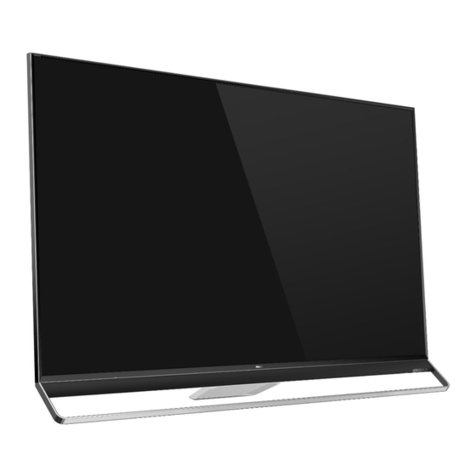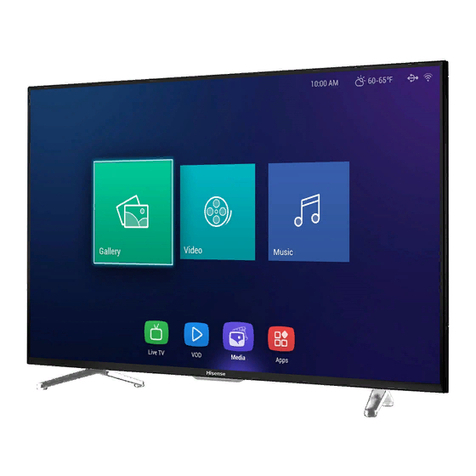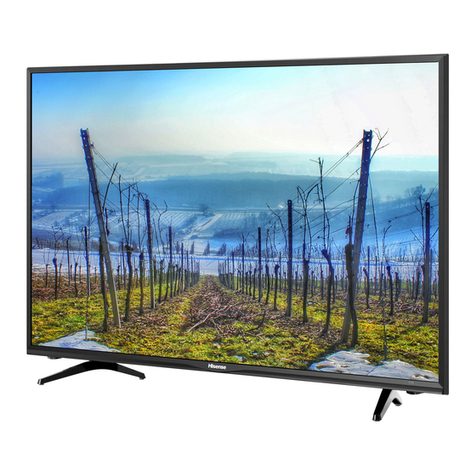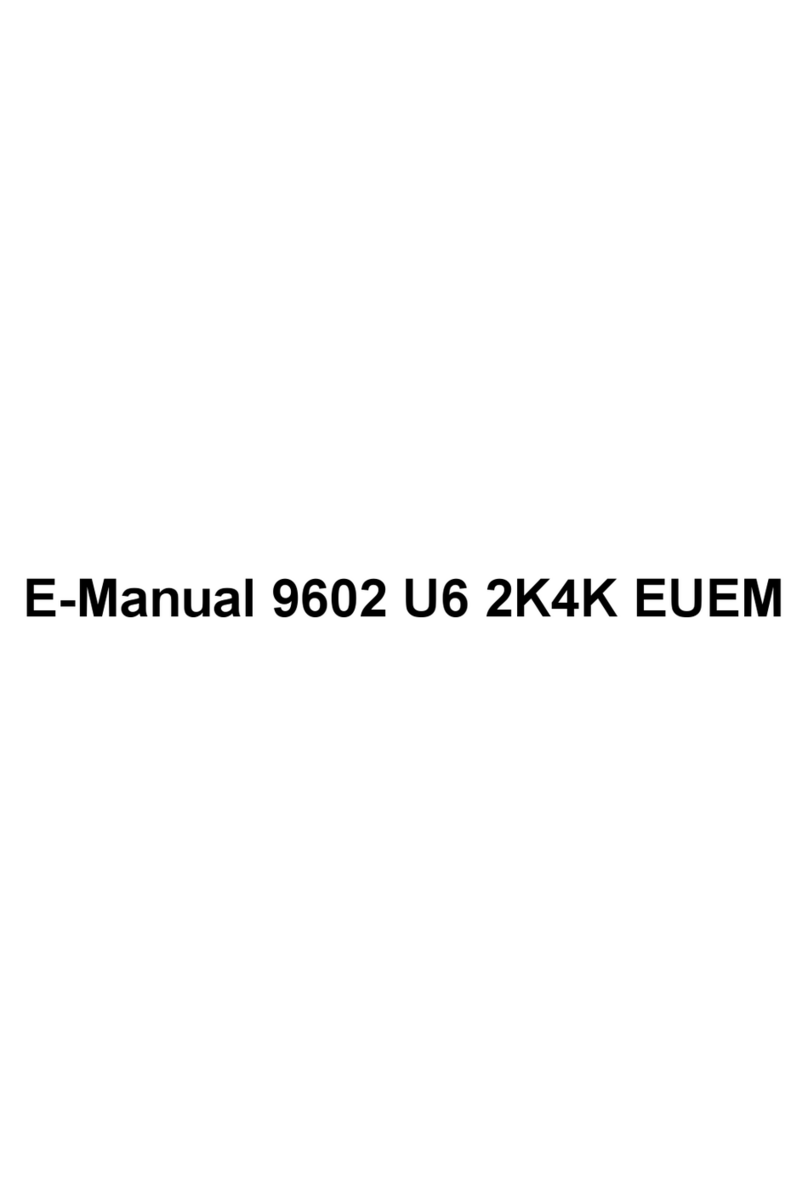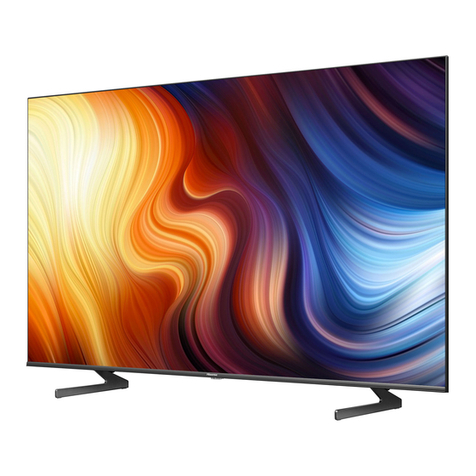5
Pin4: Tuning PWM output.
Pin5: Auto AV control SW, connected with the SCART 8th pin. Input. The rising edge or the falling
edge operates.
Pin6: Key board input.
Pin7: Volume
Pin8: Mute control,“1”is mute,“0”is off.
Pin9: Pin12、Pin18、Pin30、Pin35、Pin41、Pin55: GND.
Pin10: BAND1 control output.
Pin11: BAND2
Pin13: SECAM PLL, connected with a capacitance (No use in this type).
Pin14: +8V power source supply.
Pin15: Using a capacitor of 220n in series to GND, This pin decouples the internal digital supply
voltage of the video processor and minimizes the disturbance to the sensitive analogue parts.
Pin16: Phase-2 control loop, this pin requires a capacitor at 2.2nF (C) in series to GND.
Pin17: Phase-1 control loop, the loop filter connected to pin 17 is suitable for various signal conditions
like strong/weak and VCR signal. This is achieved by switching of the loop filter time constant
by changing the Phase-1 output current.
Pin18: GND.
Pin19: Bandgap decoupling, the bandgap circuit provides a very stable and temperature independent
reference voltage. This reference voltage (4.0 V) ensures optimal performance of the analogue
video processor part of the OM8370 and is used in almost all functional circuit blocks.
Pin20: East-west pillow signal output.
Pin21: Pin22:Vertical drive output.
Pin23: Pin24:IF input。
Pin25: Reference current, This pin requires a resistor to ground. The optimal reference current is
100mA which is determined by this resistor. The 100mA reference current should not be changed
because the geometry processor is optimised for this current. Furthermore the output current of
vertical drive and EW are proportional to this current.
Pin26: Vertical sawtooth, This pin requires a capacitor to ground of 100nF
Pin27: AGC output. This output is used to control (reduce) the tuner gain for strong RF signals.
Pin28: Audio de-emphasis.
Pin29: Sound decoupling. This pin requires a capacitor connected to ground. The pin acts as a low
pass filter needed for the DC feedback loop.
